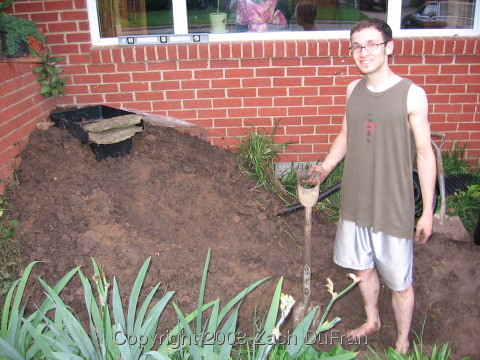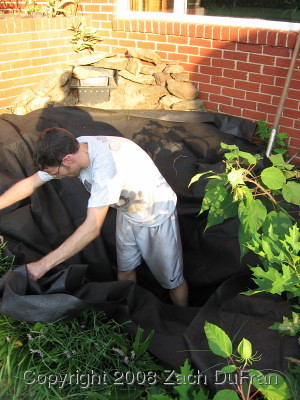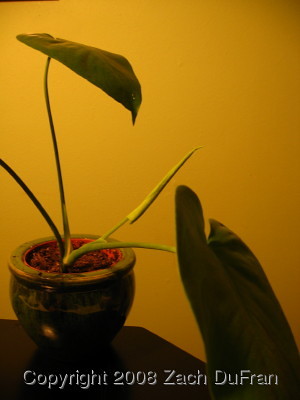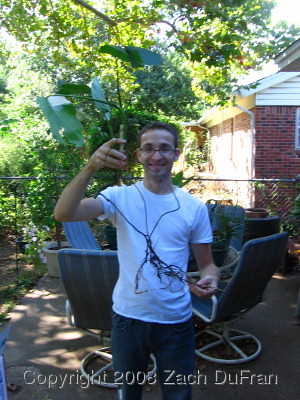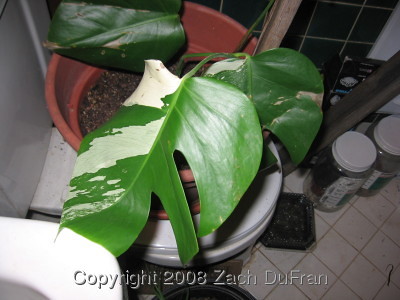[2017 Update: now that my blog is moved to blogspot, I have deactivated the subpages, so the links in this post no longer work.]
I wanted to call attention to some new features on The Variegated Thumb. On the sidebar, under "Pages" you will notice a number of links, including About, My Plant List, Photo Albums, Some Vocabulary, Suggested Links and Suggested Reading. Most of these are new and some are in progress.
My Plant List is nearly a complete list of the plants I have at home - whether in pots in the house or planted out in the yard. I know there are some missing items (a couple of trees, some unwanteds, and just some overlooked plants), but most all of my plants are on the list. The list contains 137 distinct plant species/varieties/cultivars, categorized by family. I'm not sure that categorizing by family is the best way of looking at my plants, since I only have one plant from many different families. But, it is kind of interesting, because it shows where my interest is most invested. I have far more Araceae (Aroids) than I do any other family. In compiling the list, I had to look up almost every plant to see what family it is in. So, my own collection held many surprises for me. I was surprised to see that I had 8 plants from the family Ruscaceae. And I guess I had forgotten that I have 4 species from the genus Ficus.
The Suggested Reading list is just a couple of plant books from different genres that I have read and enjoy - books that I would recommend to a friend. I have only read a limited number of books on gardening and plant care, so it is certainly not a list of the best plant books on a given topic, but it does represent the best books I have read on each topic.
The Suggested Links list includes most of the websites that I frequent concerning plants. In fact, since I compiled that list, it's like I have a bookmarks away from home. I can just go to The Variegated Thumb, click on Suggested Links and have all of my favorite websites at my fingertips. It's kind of handy for me, and hopefully you can find something useful there as well. The real trove of information is kind of hidden in the links to the GardenWeb Forums and Dave's Garden. There is enough information on those sites (and constantly growing) to keep you busy for hundreds of human lifetimes! I also compiled a pretty good list of some online plant stores that have plants that interest me (Aroids, aquatics, houseplants, exotics).
Feel free to look at the other links on the Pages tab. About simply tells about my blog. Photo Albums is a collection of links to the photo albums I have included in some of my blogs. I will probably add a new album about once per month. Some Vocabulary is a list of some words I may use on my blog to talk about plants. The definitions are nothing fancy - some may sound like a dictionary, while others are obviously my own words.
Enjoy!
I wanted to call attention to some new features on The Variegated Thumb. On the sidebar, under "Pages" you will notice a number of links, including About, My Plant List, Photo Albums, Some Vocabulary, Suggested Links and Suggested Reading. Most of these are new and some are in progress.
My Plant List is nearly a complete list of the plants I have at home - whether in pots in the house or planted out in the yard. I know there are some missing items (a couple of trees, some unwanteds, and just some overlooked plants), but most all of my plants are on the list. The list contains 137 distinct plant species/varieties/cultivars, categorized by family. I'm not sure that categorizing by family is the best way of looking at my plants, since I only have one plant from many different families. But, it is kind of interesting, because it shows where my interest is most invested. I have far more Araceae (Aroids) than I do any other family. In compiling the list, I had to look up almost every plant to see what family it is in. So, my own collection held many surprises for me. I was surprised to see that I had 8 plants from the family Ruscaceae. And I guess I had forgotten that I have 4 species from the genus Ficus.
The Suggested Reading list is just a couple of plant books from different genres that I have read and enjoy - books that I would recommend to a friend. I have only read a limited number of books on gardening and plant care, so it is certainly not a list of the best plant books on a given topic, but it does represent the best books I have read on each topic.
The Suggested Links list includes most of the websites that I frequent concerning plants. In fact, since I compiled that list, it's like I have a bookmarks away from home. I can just go to The Variegated Thumb, click on Suggested Links and have all of my favorite websites at my fingertips. It's kind of handy for me, and hopefully you can find something useful there as well. The real trove of information is kind of hidden in the links to the GardenWeb Forums and Dave's Garden. There is enough information on those sites (and constantly growing) to keep you busy for hundreds of human lifetimes! I also compiled a pretty good list of some online plant stores that have plants that interest me (Aroids, aquatics, houseplants, exotics).
Feel free to look at the other links on the Pages tab. About simply tells about my blog. Photo Albums is a collection of links to the photo albums I have included in some of my blogs. I will probably add a new album about once per month. Some Vocabulary is a list of some words I may use on my blog to talk about plants. The definitions are nothing fancy - some may sound like a dictionary, while others are obviously my own words.
Enjoy!

